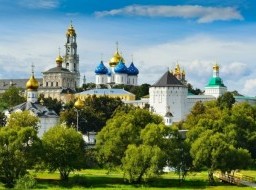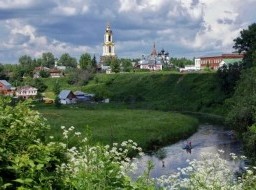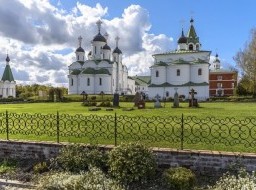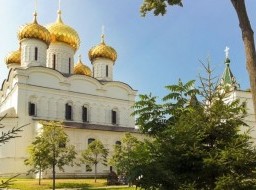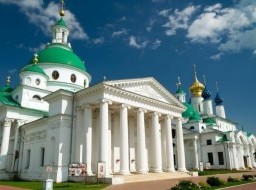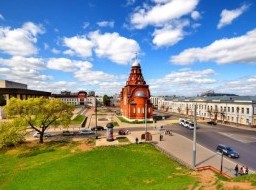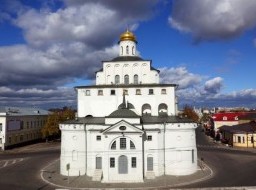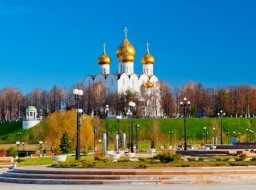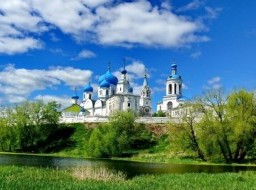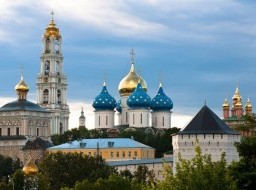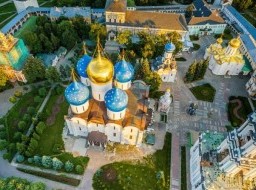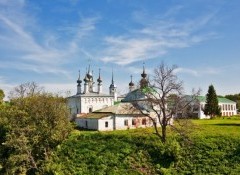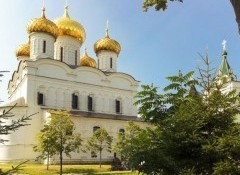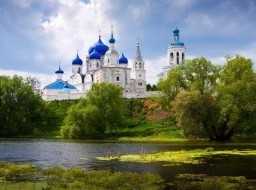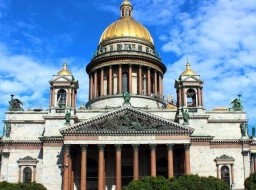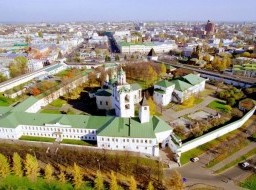Suzdal
Suzdal is a unique compilation of numerous monuments of material culture, architecture and history. Standing along the banks of the Kamenka River, Suzdal used to be the capital of several Russian principalities. It is a religious hub with numerous monasteries churches making it now an important tourist center, featuring many fine examples of old Russian architecture. The town has almost 300 architectural monuments of the last millennium and a plenty of craft shops of traditional handiwork. The main sights are the Suzdal Kremlin, Wooden Church of Saint Nicholas, Convent of the Intercession, St John the Baptist Church, Transfiguration Cathedral and others. Kremlin and several monasteries in the area are included on UNESCO's World Heritage List. Suzdal is one of Russia's oldest settlements and a place almost completely untouched by the pace of change that has transformed the architecture of the country's major cities into one of aesthetic extremes. The relatively small area of two kilometers by four kilometers contains more than 300 monuments of architecture and history, not only of Russian but of global significance. The history of Suzdal started with the first fortifications and city council on the spot where the Suzdal Kremlin now stands. Suzdal was first mentioned in chronicles in 1024. In the 11th century it was a large city in the northeast of the powerful Kievan Rus, which soon became the capital of the Rostov-Suzdal principality, a major trade and craft center. The monuments that exist today and attract multitudes of tourists all appeared in the 16th to 17th centuries. Suzdal’s most beautiful and ancient church is the Church of the Nativity of the Virgin (1222-25), while its white-stone monuments are UNESCO world heritage sites. The city has an icon painting workshop, a shop of souvenirs made of birch bark, clay and ceramic ornaments, and a manufacturer of the ancient fermented drink medovukha. Regarded by many Russians as the "jewel" of Moscow's Golden Ring, the town is located a mere 200 kilometers northeast of the capital. Despite its proximity to the rapidly expanding Moscow region, it remains largely unaffected by modernization programs, something that has enabled it to preserve a traditional way of life and a timeless feel. The system of mostly unpaved country lanes around which the local infrastructure is organized fulfills the commuting needs of the locals as well as their livestock, which graze freely in the shadow of ancient churches. The tranquil atmosphere and picturesque views serve as inspiration for amateur artists, who can be seen, bent over easels in wooded clearings, all year round. Political and religious life in Suzdal — historically the capital of the Rostov-Suzdal principality (which also encompassed Moscow and Smolensk) and later one of the most important religious centers in Russia — has traditionally revolved around its Kremlin. But in the 1960s the Soviet government decided to replace Suzdal's political and religious roles and, recognizing its tourist potential, turn it into a "museum town." Suzdal is also one of the only places in Russia where medovukha, a mildly alcoholic honey drink similar to mead, is still made. Most stalls let you taste the drink first, but you may have to chase a swarm of bees away before you get to it. The best way to get a true sense of the Suzdalian atmosphere is to visit its churches and monasteries. The priority should be a trip to the Kremlin. Specially preserved parts of the structure date back to the 10th century, and the Cathedral of the Nativity is one of the eight White Monuments of Suzdal and Vladimir, as well as a World Heritage site. When you leave the Kremlin you cross the small bridge over the Kamenka River. At this point you should be facing the walls that form part of the outer perimeter of the Museum of Wooden Architecture and Peasant Life, above which the onion domes of its two beautiful churches, Voskresenskaya and Preobrazhenskaya, are visible. On your way, visit the Convent of the Intercession, a female monastery with a beautiful 16th-century cathedral within its walls. Standing beside the huge red walls of the St. Euthymius Monastery you get a marvelous aerial view of the town. Year after year many people arrived in this city, tourists and travellers, thousands of them, from the most distant corners of the world. They observe these Suzdalian traditions with joy, they open something new for themselves every time, that has not been known before. |

